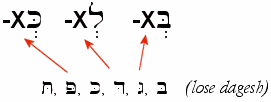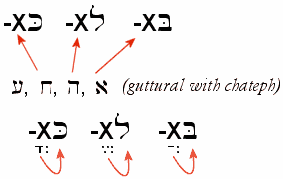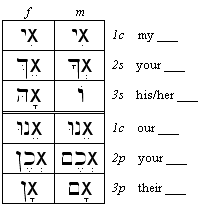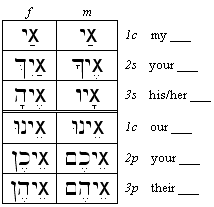|
After studying Unit Seven, you should have mastered the following material:
- General Properties of Prepositions
In Unit 7.1 you learned that a preposition is a connecting word that indicates a relationship between one word (called its object) and another word (called its antecedent). A prepositional phrase is composed of the preposition, its object, and all the object's modifiers. If the prepositional phrase modifies a noun or pronoun, it functions adjectivally (as an adjective phrase); if the phrase modifies a verb, it functions adverbially (as an adverbial phrase).
A simple preposition is a word used to indicate spatial relations ("over," "under," "above," "below," etc.), direction ("to," "from," "up," "down," etc.), temporal relations ("before," "during," "after," etc.), or causal relations ("by," "of," "for," etc.).
A compound preposition is formed when two or more words are combined and considered a single prepositional unit. In English, some examples would include: "along side of," "in case of," "in addition to," "on account of," and so on.
- Independent Prepositions
In Unit 7.2 you learned that many Hebrew prepositions stand alone as a separate word in a prepositional phrase. These prepositions are simply separate words that stand in front of their objects, and you will translate them by "reading them off the page" as a separate word.
Examples:

In each of these examples the preposition stands alone as a separate word in the sentence, and translation is simply a matter of replacement of the English equivalent.
Maqqef Prepositions
Maqqef prepositions are simply independent prepositions that are directly joined to their objects by means of a maqqef (or hyphen). This is a common occurrence in the Hebrew Scriptures.
Examples:

- Prepositional Prefixes
In Unit 7.3 you learned that three additional letters can function as a prefixes to Hebrew words. These are Bet (meaning "in," "on," or "by"), Kaf (meaning "like," or "as"), and Lamed (meaning "to," or "for"). These prefixes are sometimes called "inseparable" prepositions because they cannot stand alone as independent prepositions.
In Hebrew, you may add one of these prefixes before a noun to indicate that the noun is the object of a prepositional relationship. For example, the word melekh simply means "king," but the word lemelekh means "for a king" (note how the prefix immediately renders the noun as the object of the preposition).
Sometimes the vowel under the prefix will change, depending on the consonant that appears at the beginning of the word. Many of the vowel changes you will see here correspond with those of the Conjunctive Vav prefix you studied in Unit 4.7.
CASE 1: The Basic Form

CASE 2: Before Begedkephat Letters
When these prefixes precede the Begedkephat letters, they lose their dagesh lene.

CASE 3: Before Letters with Sheva
When we add a prepositional prefix to a word that begins with a Sheva, the prefix takes a Chireq vowel in a closed syllable:

CASE 4: Before Guttural Letters
If a prefix is joined to a guttural letter having a compound sheva, the prefix takes the simple form of the vowel:

CASE 5: Before the Definite Article Hey
Finally, if a prefix is joined to a noun with the definite article, a contraction occurs: the Hey drops out and the prepositional prefix takes the vowel that was under the Hey:

- The Preposition Min
In Unit 7.4 you learned that the preposition min ("from," "out of") is perhaps the most versatile of the Hebrew prepositions, appearing both as an independent preposition and as an inseparable preposition. In addition, min is used to form comparative, superlative, and "partitive" grammatical constructions.
- As an Independent Preposition
In Unit 7.2 you learned that the preposition min can stand alone as an independent (or maqqef) preposition in a prepositional phrase. For example:

In this case, min occurs directly before its object and is simply translated "off the page" as "from," or "out of" (note that before definite nouns, min is usually joined to its object with a maqqef).
- As an Inseparable Preposition
Like the other inseparable prepositions you studied in Unit 7.3, the letter Mem can function as a prefix to Hebrew words. For example, the word melekh simply means "king," but the word mimelekh means "from a king" (note again how the prefix immediately renders the noun as the object of the preposition).
CASE 1: The Basic Form
The inseparable form of the preposition min is actually a contraction of sorts. When min is added to a word, the Nun drops off and the first letter of the following word takes a dagesh (if possible):

CASE 2: Before Guttural Letters
When min is added to a word that begins with a guttural letter (or the letter Resh), the Nun drops off, but, since a guttural cannot take a dagesh, and the Mem prefix vowel is lengthened (from Chireq to Tsere) to compensate:

CASE 3: Before the Definite Article
When min is added to a definite noun, the Hey prefix is not dropped (as it is with the other inseparable prepositions), and the Mem prefix vowel is lengthened.
- Prepositions with Pronomial Suffixes
In Unit 7.6 you learned that some prepositions take the pronomial suffixes you have learned for singular nouns. Following academic convention, I will refer to these as "Type I" pronomial endings:

Other prepositions take the pronomial suffixes you have learned for plural nouns. Again, following academic convention, I will refer to these as "Type II" endings:

- Showing Possession with Yesh
In Unit 7.7 you learned that Hebrew does not have a word to express the idea of "have" (or "don't have"), so the idea of possession (or the lack of it) is often expressed by the formula:
- There is to me x (for "I have x")
- There is not to me x (for "I don't have x")
- There is to you x (for "you have x")
- There is not to you x (for "you don't have x")
- and so on
Grammatically, the particles yesh (there is) and ein (there is not) are combined with the Lamed prefix to form these sorts of constructions.

The word ein means "there is not," or "there are not."

|
|













